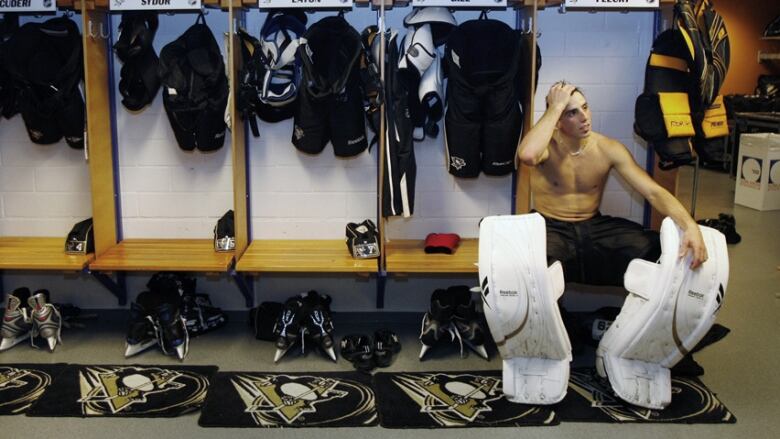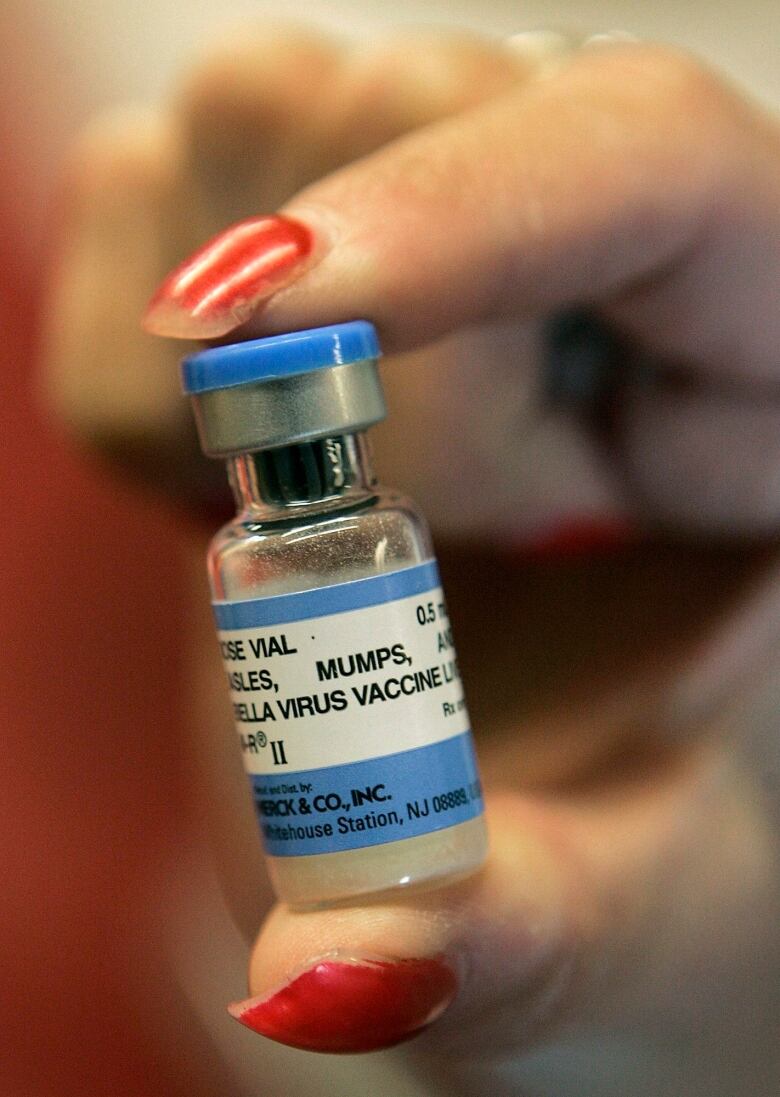NHL mumps outbreak: 7 big questions answered
The NHL is a perfect breeding ground for a pocket outbreak of an infectious disease like mumps

A mumps outbreak is spreading through the NHL, with Sidney Crosby joining the list of 14players on five teams sidelined by the virus.
Many hockey fans are shocked that a disease thought to have gone out with black and white TVs has taken over the NHL, but there have been recent outbreaks of mumps in Canada and the U.S.
CBC News answers questions sparked by this seemingly out-of-the-blue outbreak.
What is mumps and howis it spread?
Mumps is a virus that causes swollen and tender glands, particularly the salivary gland. It also causes flu-like symptomssuch as fever and body aches.
It is spread through respiratory dropletsof saliva and mucus from the mouth, nose and throat. Exchanging saliva by sharing drinks (like water bottles), food or cigarettes, and kissing are ways to spread mumps.
Coughing and sneezing also spread the droplets, particularly in crowdedplaces where people are within a couple of metres of each other.
Why is this outbreak happening in the NHL?
Mumps can be in a persons body for up to two weeks before they feel anything, so the virus can be passed to another individual before any symptoms occur.
Players sharing water bottles, for example, wouldn't know they are spreading the virus.
"That's probably how it's moving around between teams and within the teams," said Dr. Peter Lin, CBCs medical columnist.
Sidney Crosby has been diagnosed with the mumps. Full release: http://t.co/IE56sbO7h1 pic.twitter.com/y9pbnRyo0A
—@penguinsIt may also mean some players not currently exhibiting symptoms are in for an unwelcome Christmas present.
Also, pockets of mumps outbreaks occur periodically,says Dr. ToddHatchette, chief of service for microbiology at Capital District Health Authority in Halifax.
"We saw large outbreaks in 2007 and in 2009," he said.And the NHL is the perfect breeding ground for a virus like the mumps.
"The NHL is like any enclosed population like dorms or schools. These are people that are in close contact with one another for long periods of time, and they are the ones most at risk for getting any infections," Hatchette said.
How can the NHL stop the spread?
The number one way to prevent the spread of mumps is vaccination, through a series of two shots. The MMR vaccine (for measles, mumps and rubella viruses) immunizes against mumps.

The first shot is 70-80 per cent effective and the second shot boosts the effectiveness of the vaccine to 90 per cent.
Enforcing the use of hand sanitizers and making sure each player has his own water bottle are also ways for the NHL to try to control the outbreak.
For the general population, health-care professionals recommend cleaning frequently touched surfaces regularly, not sharing drinks or eating utensils, and not touching your hands to your mouth.
If someone has the mumps, its best for them to stay home for five days after glands swell, as people can be contagious for up to nine days after symptoms appear.
Sidney Crosby had both vaccines. How did he still get infected?
The vaccine isnt perfect. Even two doses may not be enough.
There is a group of people who get two shots and just don't respond, and doctors say the reasons for that arent exactly clear.
"It's like they don't have the factory to make the antibodies," says Lin. "So with the players, the NHL is trying to figure out which group they belong to."

People born between 1970 and 1992 represent a group with only partial protection against mumps and are most at risk.A single shot was common at the time, and two doses did not become standard until themid-1990s. (Born in 1987, Sidney Crosbywas in the group that had only one MMR shot as a child; his booster came as he was about to travel to the Sochi Winter Olympics in February.)
"That age range with that team environment in a locker room ifthe virus is introduced with close contact an outbreakwould notbe that uncommon," saidDr. Shelley Deeks, medical director of immunization and vaccine-preventable disease forPublic Health Ontario.
The Center for Disease Control and Prevention in the U.S. is working with the NHL to control the outbreak, and Lin says its too early to tell if this is a potential new strain of the virus.
"Right now there should be no worries of a mass outbreak or panic," he said. "Just check with your doctor to make sure you've had your shots."
Is this related to fewer people being vaccinated?
In parts of Canadavaccination rates have dropped due to fears about vaccines.
"Its hard to unscare people," said Shannon MacDonald, a registered nurse and adjunct assistant professor at the University of Alberta who researches vaccine trends.
"There isa lot of interest in making sure people are vaccinated," said Hatchette. "Any resurgence of vaccine-preventable diseases are going to be more problematic in populations where the number of vaccinated people are lower. And we're seeing a resurgence in a number of areas where thats happening."
Right now it's hard to say if thats happening, says Deeks,because the number of provincial cases this year has been low. "But we do have pockets where there are groups of people who tend not to immunize, and those areas are much more susceptibleif mumps is introduced."
Why do you not want mumps?
It can cause more serious infections.
Mumps can lead to infections in the testicles and sterility issues. It can also lead to inflammation of the lining of the brainand, in some cases, deafness.
When canNHL players get back on the ice?
There's no treatment for mumps, Lin says.
"We can only treat the symptoms, like fever and dehydration, which is just buying time for the body to do its job to make antibodies to fight the disease," he says.
Usually recovery takes about a week to 10 days and most patients with mumps make a full recovery.
But, Lin says, "these guys have a gruelling schedule so they might need a little longer to recover."
Crosby sat outthe Pittsburgh Penguins Monday night game against the Tampa Bay Lightning.












_(720p).jpg)


 OFFICIAL HD MUSIC VIDEO.jpg)
.jpg)



























































































